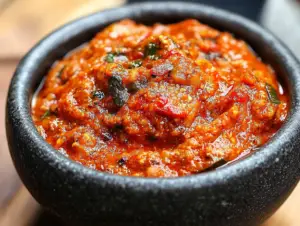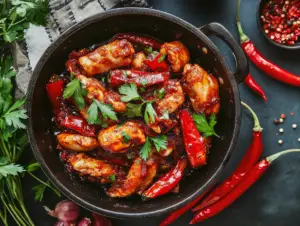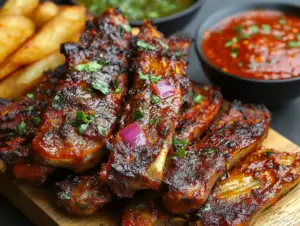Can Ooni Be Too Hot? A Comprehensive Guide to Managing Ooni Oven Heat
Ooni pizza ovens are designed to provide a high-quality pizza-making experience right in your backyard. Known for their portability, quick heating capabilities, and authentic results, these ovens are beloved by both amateur pizza enthusiasts and professionals alike. However, one common question that arises is whether the Ooni oven can get too hot and what the consequences might be. This article will explore the causes of overheating, how to manage it, and ensure your Ooni performs perfectly every time.
How Ooni Ovens Work: Understanding the Basics
Before diving into the potential issue of overheating, it’s essential to understand how Ooni ovens function. Ooni offers several models, each designed for specific heat sources, including:
- Gas (like the Ooni Koda series)
- Wood (such as the Ooni Karu)
- Electric (the Ooni Volt series)
All these ovens are engineered to reach temperatures of up to 950°F (500°C), ideal for cooking a pizza in just 60-90 seconds. This high heat enables you to achieve a perfect crispy crust with a soft interior, mimicking the cooking conditions of traditional wood-fired ovens. However, reaching such high temperatures can sometimes lead to the oven overheating, especially if not used correctly.
If you’ve experienced your Ooni oven getting too hot, you’re not alone. Many users have reported this problem on various forums, including Pizzamaking.com, where discussions around managing high temperatures in Ooni ovens frequently occur.
In some cases, users have found it difficult to control the heat, particularly when using wood or charcoal as fuel. Ooni’s official support page advises turning down the flame and carefully monitoring the preheating process to avoid the issue of excessive heat.
What Happens When Your Ooni Gets Too Hot?
Overheating in an Ooni oven can cause several undesirable effects that may affect the quality of your pizza and even damage your oven over time. Here’s what might happen when the oven gets too hot:
1. Burnt Pizza Crusts and Toppings
Ooni ovens are designed to cook pizzas quickly. However, if the oven becomes too hot, the crust can burn before the pizza is fully cooked. This results in a charred, overdone crust, while the cheese and toppings may remain undercooked or unevenly cooked. The intense heat can also cause the toppings to burn if exposed for too long.
2. Overheating of the Pizza Stone
The pizza stone in an Ooni oven is designed to absorb and retain heat, ensuring an evenly cooked pizza base. However, if the stone becomes too hot, it can burn the bottom of the pizza within seconds, even if the toppings appear to be uncooked. A stone that is too hot can also crack over time due to thermal shock from extreme temperatures.
3. Damage to Oven Components
Excessive heat can cause damage to the internal components of the oven, especially if the oven is not allowed to cool down properly after use. This can result in cracked pizza stones, warped metal parts, or even malfunctioning gas nozzles in models like the Ooni Koda.
4. Difficulties in Heat Management
For some Ooni users, particularly those who use wood or charcoal models, controlling the temperature can be tricky. The flame can flare up unexpectedly, leading to rapid overheating. The use of excessive fuel can also cause temperatures to spike quickly, making it difficult to maintain a stable cooking environment.
How to Prevent Overheating in Your Ooni

Preventing your Ooni oven from overheating is possible with the right techniques. By following these tips, you can manage the heat more effectively and avoid the issues caused by excessive temperatures:
1. Adjust the Flame
For gas-powered models like the Ooni Koda, controlling the flame is one of the easiest ways to manage heat. Lowering the flame as soon as the oven reaches the desired temperature can prevent the pizza stone from becoming too hot. If you find your oven overheating, turn the flame down to maintain a stable cooking environment.
Tip: An infrared thermometer is an excellent tool for monitoring the temperature of your pizza stone. This way, you can ensure it remains at the ideal range of 750°F-850°F (400-450°C) for Neapolitan-style pizzas without overheating.
2. Limit Preheating Time
While preheating is essential for a crispy pizza crust, over-preheating can lead to excessively high stone temperatures. Most Ooni ovens need about 15-20 minutes to reach optimal cooking temperature. After that, you can lower the flame or allow the oven to cool slightly before inserting your pizza. Reducing the preheating time will prevent the pizza stone from absorbing too much heat.
3. Use a Pizza Peel to Rotate the Pizza
Rotating the pizza regularly while it cooks can help avoid burning. Use a turning peel to rotate the pizza halfway through cooking. This technique ensures even exposure to the flame, preventing one side from burning while the other remains undercooked.
4. Be Mindful of Fuel Choices
If you’re using a wood or charcoal-powered Ooni, it’s essential to use the right type and amount of fuel. Excess fuel can cause temperatures to spike, leading to an overheated oven. Use smaller amounts of dry, well-seasoned wood to maintain steady heat and avoid adding too much fuel at once.
5. Modifications and Accessories
Some users opt for modifications to manage their oven’s heat better. For example, converting your gas-powered Ooni to natural gas can offer more consistent temperature control than propane. Additionally, using accessories like an infrared thermometer and heat-resistant gloves can help manage the oven’s high temperatures more safely and efficiently.
On YouTube, you can find tutorials on how to lower the flame on the Ooni Koda 16, which is particularly prone to overheating. These simple adjustments can make a big difference in keeping your Ooni’s temperature in check.
Why Proper Preheating Matters
One of the most important aspects of using an Ooni oven is preheating. However, there’s a delicate balance to achieve the perfect temperature. Preheating your oven ensures that the pizza stone reaches a high enough temperature to cook the pizza base evenly and create a crispy crust. But, over-preheating can cause the stone to become too hot, leading to burnt pizza bases.
Here’s how to preheat your Ooni oven properly:
- Set the dial to maximum heat: Turn your oven to full power for around 15-20 minutes. This will ensure that the pizza stone reaches the ideal temperature for pizza cooking.
- Monitor the stone temperature: Use an infrared thermometer to check when the stone hits the target temperature range of 750°F-850°F (400-450°C).
- Adjust the flame or fuel: Once the desired temperature is reached, lower the flame or reduce fuel to prevent further heating of the stone.
By paying close attention to preheating times and using the right tools, you can avoid overheating and ensure your pizzas come out perfectly cooked.
Maintaining Your Ooni for Optimal Heat Management

Proper maintenance of your Ooni oven is key to avoiding overheating and prolonging the life of your oven. Regular cleaning and checking your oven’s components can help ensure that it functions correctly without getting too hot.
1. Clean the Oven Regularly
After each use, it’s essential to remove any burnt food residue or ash from the oven. Built-up debris can cause uneven heat distribution and even contribute to overheating. A clean oven allows for better airflow and more consistent cooking temperatures.
2. Inspect the Pizza Stone
Over time, your pizza stone can develop cracks or become too smooth if not maintained properly. Inspect the stone regularly for signs of damage, and replace it if necessary. Additionally, avoid using water to clean the stone, as this can lead to thermal shock when exposed to high temperatures.
3. Check Gas Nozzles and Hoses
For gas-powered models like the Ooni Koda, it’s essential to inspect the gas nozzles and hoses for any blockages or wear. Malfunctioning gas components can cause uneven heating and overheating. Make sure everything is clean and functioning correctly before each use.
4. Store the Oven Properly
When not in use, store your Ooni oven in a cool, dry place, preferably with a cover to protect it from the elements. Keeping your oven in good condition will help prevent overheating issues in the long term.
FAQs: Common Questions About Ooni Overheating
How hot is too hot for an Ooni oven?
An Ooni oven typically reaches optimal cooking temperatures between 750°F-850°F (400-450°C). Anything beyond that can cause overheating issues, resulting in burnt pizzas and damage to the oven components.
Can I reduce the flame in my Ooni Koda?
Yes, the flame in the Ooni Koda can be adjusted using the heat control dial. Turning the dial down will reduce the flame and help prevent the oven from getting too hot.
Why does my pizza burn on the bottom in my Ooni?
If your pizza burns on the bottom, it’s likely because the pizza stone has become too hot. Try reducing the preheating time or lowering the flame before inserting the pizza.
What fuel causes the most heat in Ooni ovens?
Wood and charcoal can cause rapid temperature spikes, especially if large amounts are used. Gas provides more consistent heat control, making it easier to manage.
Can I overheat the stone in an Ooni oven?
Yes, the pizza stone can become too hot, leading to burnt pizza bases. Monitoring the stone’s temperature with an infrared thermometer can help prevent overheating.
What are the best techniques for cooling down an Ooni quickly?
To cool an Ooni oven quickly, turn off the heat source and open the oven’s door to allow the heat to escape. Additionally, removing any excess fuel can help cool down the oven faster.
How can I prevent my Ooni from overheating?
Adjusting the flame, reducing preheating time, and monitoring the oven’s temperature with an infrared thermometer are effective ways to prevent overheating.

Conclusion
While Ooni ovens are designed for high-heat cooking, managing that heat is crucial to avoid burning your pizzas or damaging your oven. By following the tips outlined in this article—adjusting the flame, limiting preheating time, and maintaining your oven—you can ensure that your Ooni operates at the perfect temperature for delicious, evenly cooked pizzas every time.
Understanding how to balance heat levels and taking proper precautions will allow you to get the most out of your Ooni without the worry of overheating. Keep these tips in mind, and enjoy the art of pizza making with confidence!

